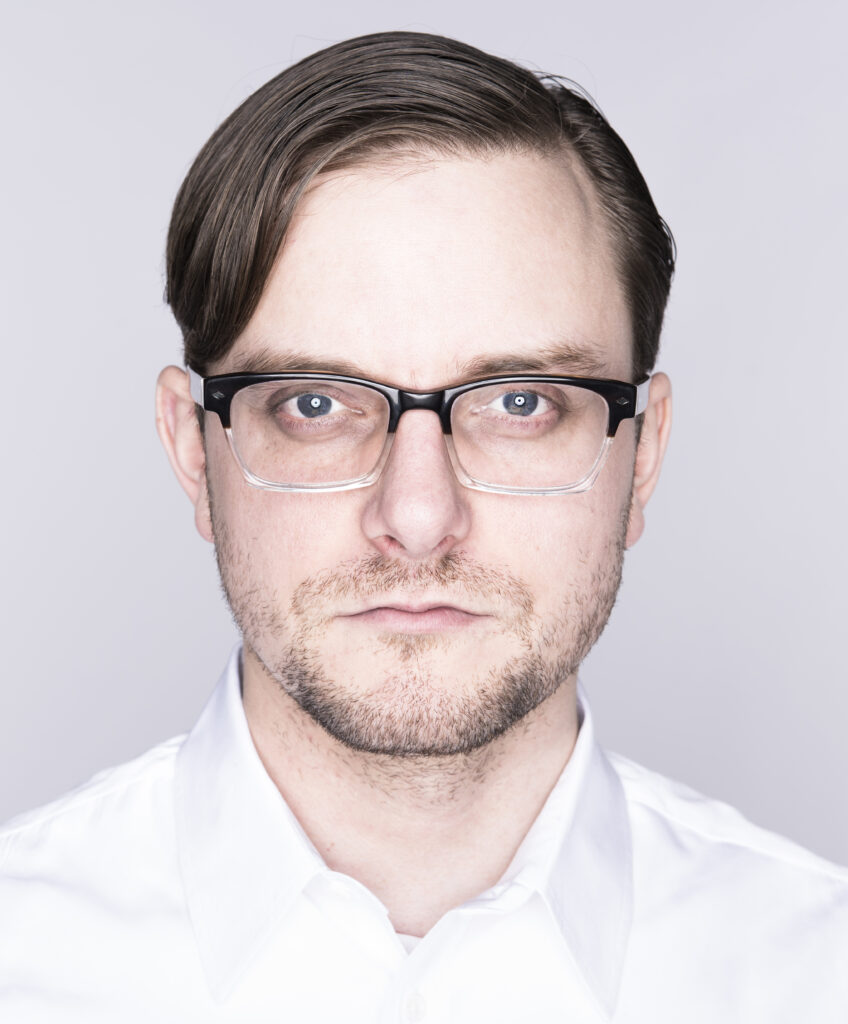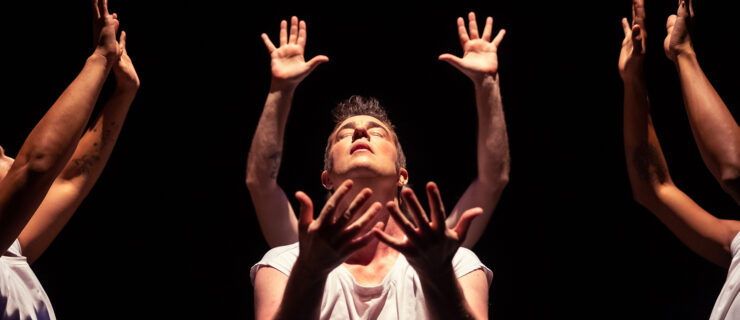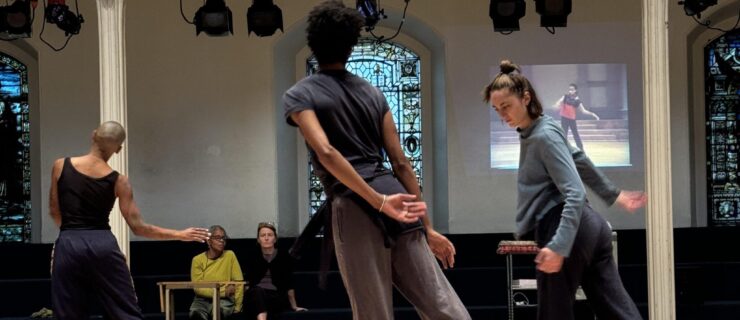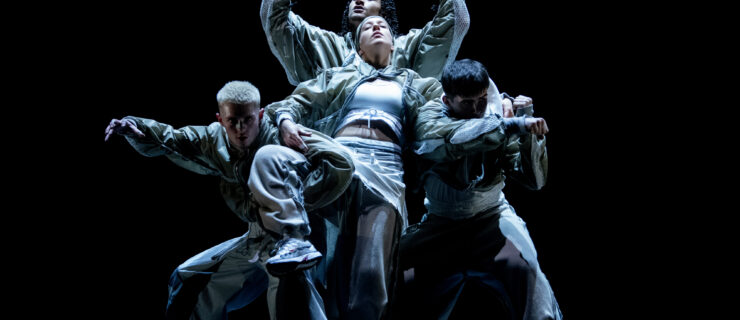Dances with Robots: A New Podcast Explores What Happens When Bodies Meet Technology
From the dance/tech wonkfest The Conference for Research on Choreographic Interfaces (CRCI) comes a new podcast, Dances with Robots, launching November 14. Hosted by Sydney Skybetter, choreographer and deputy dean of the College for Curriculum and Co-Curriculum at Brown University, with Ariane Michaud serving as co-host and executive producer, the pod features an impressive roster of guests addressing the many points of intersection between dance and technology: choreography, computation, surveillance, embodiment—and, yes, robots.
Skybetter, perhaps the dance field’s favorite futurist, founded CRCI at Brown in 2015. He’s since hosted several gatherings for artists and scholars interested in the risks and creative possibilities of art and computational systems. Considerable research and planning went into the podcast’s first season, which Skybetter calls “flippin’ bonkers.” Here are his thoughts on the new project and what happens when bodies meet technology.

Why was this the right time to start a podcast?
I came of age through podcasts, but it never would have occurred to me that the kinds of conversations we were having at CRCI would be of interest to others. It wasn’t until Ariane said “I think we should have a podcast” that things started to organize. Also, the community around CRCI has grown sufficiently large, nuanced, and complex enough that a podcast is a natural extension of what we have been doing.
Can you give us a snapshot of CRCI?
It’s a community of dance practitioners, technologists, critical theorists, scholars, and improvisers who share a common interest in where bodies meet emerging technologies. We specifically emphasize choreographic practice as we are exploring the complexities of these collisions. Dance is central, even if we are intensely collaborative and interdisciplinary.
How do you see this podcast as an extension of CRCI’s mission?
We are interested in bringing the equitable consideration of bodies to all places where performance and emerging technologies coincide. What we tried to do in the podcast was represent the kind of prismatic discourse, conversations, and stories that the individuals who came to CRCI would offer. We don’t foreground technologists or put them on a pedestal.
How did you structure the podcast?
Each of the stories we tell in the podcast is a result of Ariane’s and my research. We have been in dialogue with an international rolodex of dance nerds who have been telling their stories to us through our programming for years.
What have you learned about the intersection of dance and tech from teaching choreo-robotics at Brown?
We talk about just how multifaceted and reciprocal the experience of teaching choreo-robotics is in the podcast. Our hypothesis was that we would be able to create a course environment that allowed burgeoning technologists and young artists to collaborate with one another for performance projects. Through this class we had to unpack why in American culture technologists are often the highest paid, while dancers and artists are the opposite. A lot of it had to do with stereotypes and expectations around these different forms of expertise and labor. Ultimately, we are trying to figure out how to work together equitably.
Let’s get to the dancing robots. What can they do?
Choreography is a way to start conversations about how bodies make meaning, whose bodies matter, how bodies interface with technologies. Dance is a way of demonstrating how agile, how kinesthetically intelligent, how capable today’s robots are. Making robots dance is astonishingly hard. In a way it is an illumination of the kinds of capacities that robots will have in the future. They will inevitably be used in elder care—in fact, episode seven focuses on this question of care. Those robots will need to be extraordinarily dexterous and massively more intelligent than they are presently. They will require a level of kinesthetic awareness that they currently lack, and that dancers could provide.
Are robots coming for choreographers’ jobs?
What labor are you replacing, and who values it? I’m not saying we shouldn’t be concerned, but on the other hand the Western dance tradition has always existed in relation to disruptive technologies. The stage, the pointe shoe, and fire proofing were all disruptive technologies. I have no doubt that the dancers and choreographers of today and the future will be able to work with and alongside and through robots, virtual reality, and AI. The challenge has been to create spaces that are conducive to that kind of investigation.
Will there be a Season 2?
Flippity-doo-da, yes there will!




